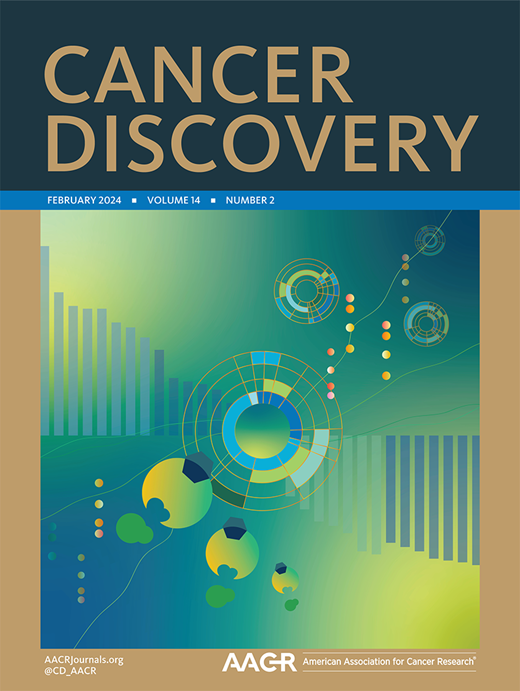追踪从原发性到转移性ccRCC的非遗传进化:TRACERx肾
IF 29.7
1区 医学
Q1 ONCOLOGY
引用次数: 0
摘要
虽然透明细胞肾细胞癌(ccRCC)遗传进化的关键方面及其临床意义已被充分记录,但遗传特征如何与表型和肿瘤微环境(TME)共同进化仍然难以捉摸。在这里,通过对来自79名TRACERx肾脏研究患者的243个样本的基因组-转录组学联合分析,我们确定了普遍的非遗传性肿瘤内异质性,其中超过40%的非遗传改变。通过整合肿瘤转录组和系统发育结构,我们观察到特定表型性状的趋同进化,包括细胞增殖、代谢重编程和高非整倍体中推测的cGAS-STING抑制因子的过表达。我们还揭示了肿瘤和T细胞库之间的共同进化,以及TME从抗肿瘤状态到免疫抑制状态的纵向转变,这与获得复发性晚期ccRCC驱动因子9p丢失和SETD2突变有关。我们的研究揭示了ccRCC的临床相关和迄今未被充分认识的非遗传进化模式本文章由计算机程序翻译,如有差异,请以英文原文为准。
Tracking non-genetic evolution from primary to metastatic ccRCC: TRACERx Renal
While the key aspects of genetic evolution and their clinical implications in clear cell renal-cell carcinoma (ccRCC) are well-documented, how genetic features co-evolve with the phenotype and tumor microenvironment (TME) remains elusive. Here, through joint genomic-transcriptomic analysis of 243 samples from 79 patients recruited to the TRACERx Renal study, we identify pervasive non-genetic intratumor heterogeneity, with over 40% not attributable to genetic alterations. By integrating tumor transcriptomes and phylogenetic structures, we observe convergent evolution to specific phenotypic traits, including cell proliferation, metabolic reprogramming and overexpression of putative cGAS-STING repressors amid high aneuploidy. We also uncover a co-evolution between the tumor and the T cell repertoire, as well as a longitudinal shift in the TME from an anti-tumor to an immunosuppressive state, linked to the acquisition of recurrently late ccRCC drivers 9p loss and SETD2 mutations. Our study reveals clinically-relevant and hitherto underappreciated non-genetic evolution patterns in ccRCC
求助全文
通过发布文献求助,成功后即可免费获取论文全文。
去求助
来源期刊

Cancer discovery
ONCOLOGY-
CiteScore
22.90
自引率
1.40%
发文量
838
审稿时长
6-12 weeks
期刊介绍:
Cancer Discovery publishes high-impact, peer-reviewed articles detailing significant advances in both research and clinical trials. Serving as a premier cancer information resource, the journal also features Review Articles, Perspectives, Commentaries, News stories, and Research Watch summaries to keep readers abreast of the latest findings in the field. Covering a wide range of topics, from laboratory research to clinical trials and epidemiologic studies, Cancer Discovery spans the entire spectrum of cancer research and medicine.
 求助内容:
求助内容: 应助结果提醒方式:
应助结果提醒方式:


